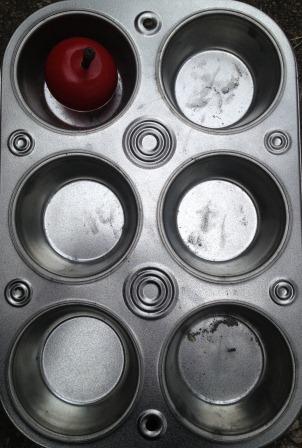“M is for Mice.”

What sighted child hasn’t made pieces of artwork with apple stickers covering the outline of an uppercase “A” and kidney beans glued all along an upper case “B?” Children learning print often represent letters with objects that have their initial sounds. Why not for braille?
I have accumulated an alphabetized collection of objects, each fitting into the sections of muffin tins. When my braille students are learning the letter “a,” I have them place a wooden apple (or a bottle of anise cooking extract) into the upper-left (dot one) section of a muffin/cupcake tin. When they learn “b,” they place two barrettes (or two beans, toy bears, batteries, beads, bells or balls), one in dot one and one in dot two of the muffin tin. These lessons help my students to learn initial letter sounds, the layout of the six dots in a 2 by 3 matrix, the Braille letter dots for specific letters, and the skill of using one hand as a place-saver and the other hand to set the objects.

I don’t have objects for all 26 letters …. some were definitely more of a challenge than others to locate, and I don’t think it’s critical to have all the letters. One of the favorite objects among my students, though, is my collection of three rubber mice for “m,” dots one, three and four. (I think my students sense… and enjoy…. my squeamishness around rodents.) Other favorites are the bottles of nail polish for “n” and the magnets for “m.” 
I sometimes add objects to represent initial contractions as well as initial letters, like five Braille erasers to represent “er.” In general, though, by the time my students are ready for contractions, they no longer need the concrete muffin tin experience.
* Note that muffin tin can be lined with white paper or other color to create greater contrast.

